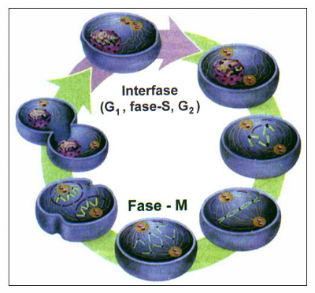The macrophage is the body's defense cell and acts on the immune system.
Macrophages are found in connective tissue and are concentrated in organs with the body's defense function.

The main characteristics of macrophages are:
- Irregularly Shaped Cell
- abundant cytoplasm
- Presence of pseudopods
Occupation
The main function of macrophages is perform phagocytosis. The macrophage phagocytoses damaged and aged cells, cell debris, foreign agents and inert particles.
The other functions of the macrophage vary depending on where it is found and on the name it receives. However, it is important to emphasize that all types perform phagocytosis.
| Name | Local | Occupation |
|---|---|---|
| alveolar macrophages | Lungs | Defense against microorganisms and foreign agents |
| Kupffer cells | Liver | Removal of aged cells and destruction of bacteria |
| mesangial cells | Kidneys | Foreign substance phagocytosis |
| microglia | Nervous system | Phagocytosis and nervous system defense |
| Histiocytes | Connective tissue | Phagocytic function |
| monocytes | Blood | Defense |
| osteoclasts | bone tissue | Bone remodeling |
Macrophages are also essential for the functioning of the immune response. They produce and release substances that induce the production of cells involved in inflammatory and immune processes.
Thus, they start the inflammatory reaction process. As well as cleaning the inflamed sites by removing the destroyed cells.
Another characteristic of the macrophage that contributes to the immune response is the presence of surface receptors, which recognize microorganisms and stimuli.
In this way, macrophages alert the immune system about the presence of a foreign agent in the body.
Macrophages and Monocytes
Macrophages originate from monocytes, blood cells formed in the bone marrow. They circulate through the bloodstream until reaching their destination, where they undergo differentiation and start to perform specific functions.
The monocyte is a type of leukocyte and represents the immature form of the macrophage. The main difference that occurred in the transformation from monocyte to macrophage is the increase in the number of lysosomes.
The greater amount of lysosomes increases the ability to carry out phagocytosis.
Macrophages and Neutrophils
The neutrophil represents one of the types of leukocytes, which is also involved in the inflammatory response and the immune system.
They are abundant and short-lived, can last up to six hours in the blood and two days in the connective tissue.
Like macrophages, neutrophils also have the ability to phagocytosis at sites of inflammation. They ingest microorganisms and foreign particles.
Neutrophils are essential elements in the initial phase of the inflammatory response. After performing phagocytosis, neutrophils die by apoptosis.
Read too:
- Glial Cells
- Connective tissue



